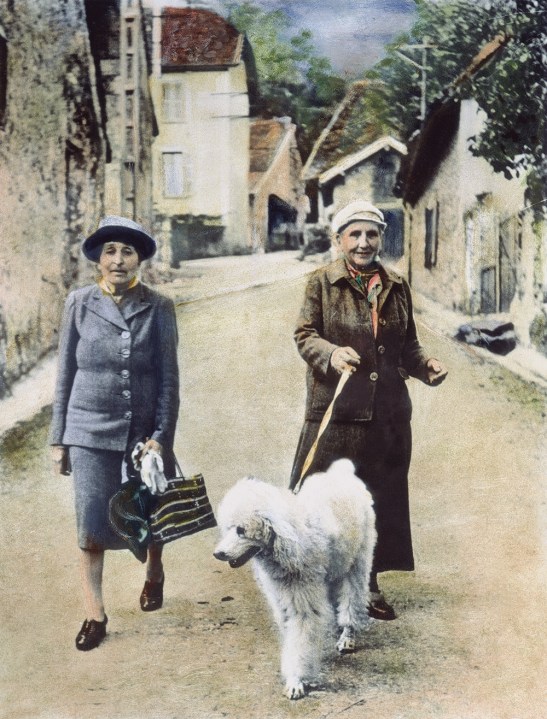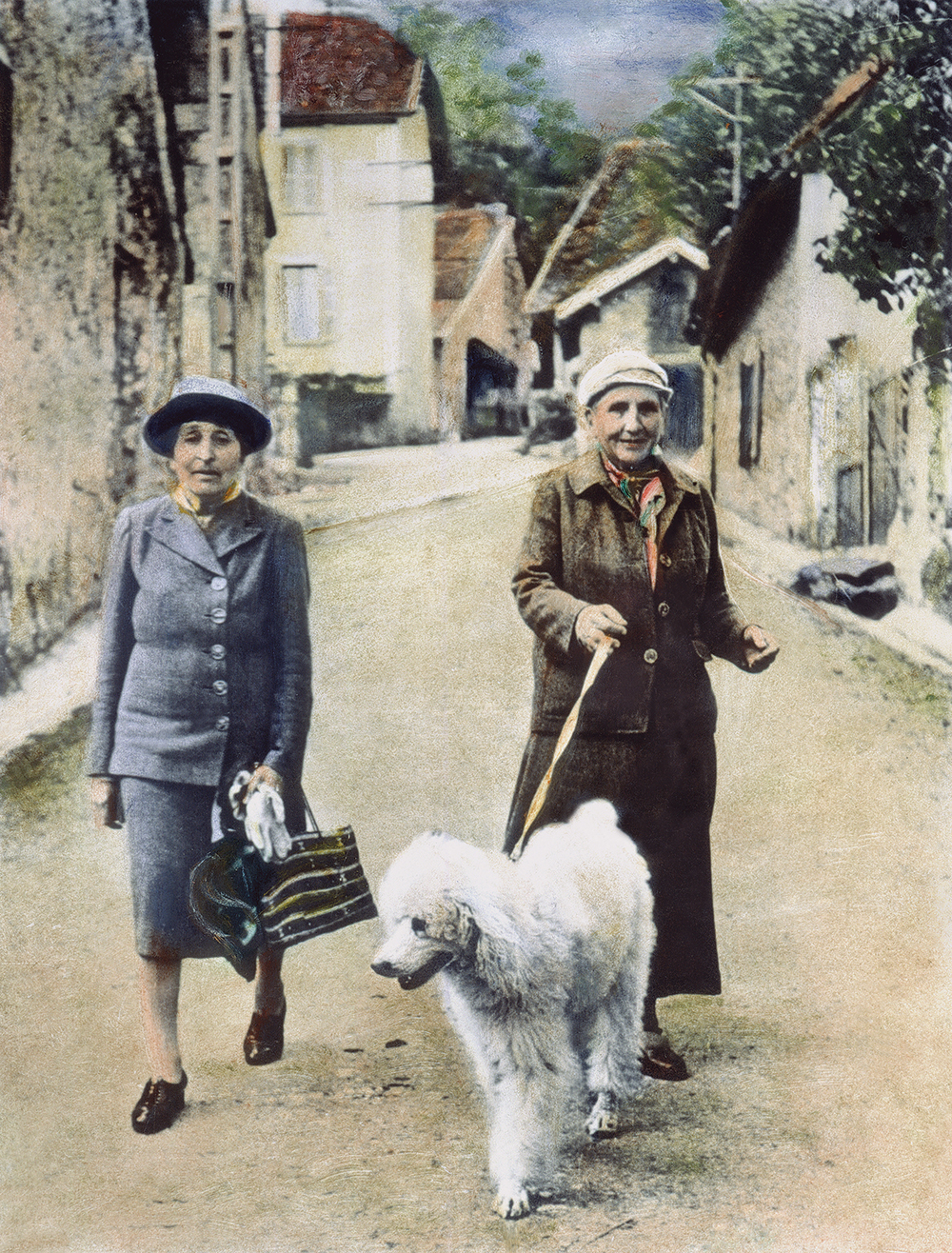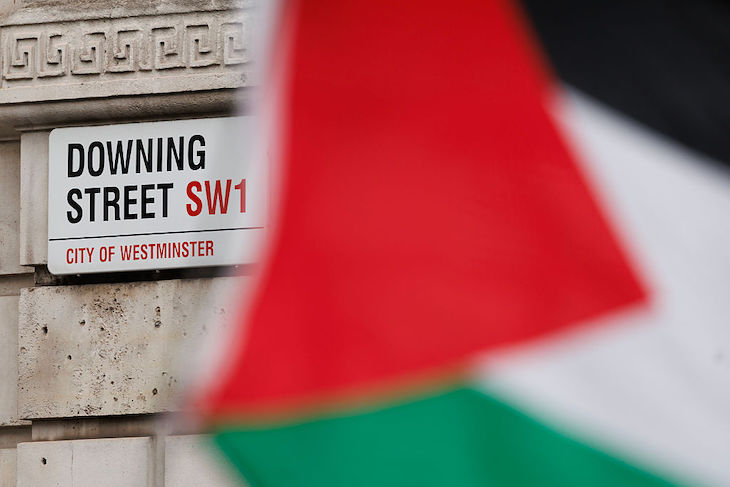
To most people, the salient qualities of Gertrude Stein are unreadability combined with monumental self-belief. This is the woman who once remarked that ‘the Jews have produced only three original geniuses – Christ, Spinoza and myself’. Of the reading aloud of her works, Harold Acton complained: ‘It was difficult not to fall into a trance.’ Even if you are as good a writer as Francesca Wade, it is still difficult to avoid the influence of what she herself calls Stein’s ‘haze of words’. So the first half of this impressively researched biography is cerebral rather than colourful.
Stein’s writing career really began when, aged 28 (she was born in 1874), she lived alone in Bloomsbury and began to record in notebooks her thoughts, observations, descriptions of her surroundings and snatches of overheard conversations. In the spring of 1903 she joined her younger brother Leo in Paris, where the pair, supported by a monthly allowance from the family inheritance, lived simply – both always wearing plain brown corduroy suits. Under Leo’s influence, they spent much of their allowance on works of art by emerging controversial painters. Their first major buy was a portrait by Henri Matisse that had been much mocked by the regular art crowd. Soon they were introduced to an unknown young Spaniard whom they were told was ‘the real thing’. It was Picasso – so poor he had to share a mattress with a friend. As they bought from him, a friendship grew.
In 1907 came Stein’s seminal meeting with Alice B. (Babette) Toklas, herself of Polish-Jewish extraction. There was an immediate attraction and, as their friendship grew, Stein asked Toklas if she would like to type out some of her writings. Toklas leapt at the suggestion, arriving every morning and working away until Stein appeared for her breakfast coffee at noon. It was the start both of a love affair and a lifetime’s routine – Stein working late into the night and Toklas typing the result the following day.
Publication was a different matter. Although both women believed Stein to be a genius, editors found the work incomprehensible, plotless and meandering. Endless rejections followed – all neatly annotated by Toklas in a special black notebook. Even Stein’s first book, Three Lives (1909), was a paid-for publication. As for The Making of Americans, her magnum opus completed in 1912, it languished in a drawer for many years.
In 1913, Leo, who by now disagreed with his sister about almost everything, moved to Florence, leaving Stein and Toklas an established couple in Paris. Much of the content of Stein’s notebooks concerned their daily life (‘Alice is making tapestry’), although new ways of using words were an increasing obsession. Could they mean something different each time they were repeated? Why was a paragraph more emotional than a sentence?
By the 1920s, Stein was a cult personality whom everyone in the literary and arts world wanted to meet
Stein was also moving away from nouns and punctuation – or, as Wade puts it, ‘loosening language from the scaffolding of syntax’. Even the first world war, which she spent partly in England, did not interrupt the flow of poems, plays and essays – or the stream of criticism. ‘Your work… is for the cognoscenti,’ wrote one editor tactfully. Others were crisper, one American paper describing it as ‘a scramble of meaningless words from a writer who nonetheless appears to be the most talked about creature in the intellectual world today’.
For Stein had indeed evolved into a cult personality. Throughout the 1920s, she was at the heart of the modernist movement – a person whom everyone in the literary and arts world wanted to meet. At her weekly salon in the home she shared with Toklas at 27 rue de Fleurus on the Left Bank she would sit foursquare on a throne-like chair with Picasso’s portrait of herself above her.
More Picassos, a few Matisses and other works of by-then recognised artists hung on the walls. Male writers and acolytes crowded around, their spouses expertly corralled by Toklas (Stein did not like talking to wives). All came to pay homage to Stein, who received it as her due. Conversation focused on her work and her ideas – she had little interest in anyone else’s. She viewed James Joyce in particular with disfavour and perhaps as a rival – as a writer of equally immense, difficult books, especially since Ulysses had emerged to acclaim in 1922. ‘Mention Joyce twice,’ said Ernest Hemingway, one of her protégés, ‘and you will never be asked again.’ You would receive instead a small hand-written card with the words: ‘Miss Stein declines further acquaintance.’
In 1925, after strenuous efforts and through the good offices of a friend, The Making of Americans was finally published. Described by Wade as ‘a work of restless dialogue with itself that seems to be constantly shedding its own skin’ (there is quite a lot of that sort of phraseology in this book), it is a vast, unwieldy tome, notable only for the quote by which Stein herself is best known – ‘A rose is a rose is a rose is a rose’. By contrast, her next book, The Autobiography of Alice B. Toklas (a portrait of Stein supposedly seen through Toklas’s eyes), published in 1932, was simply and readably written and an immediate success. ‘Gertrude isn’t steinish any more,’ wrote one reviewer. It heralded a renaissance, with lecture tours, interviews and international renown.
For much of the second world war Stein and Toklas continued to shelter in a house they had rented for several years in the French hamlet of Bilignin (Ain), about which Wade writes delightfully and sympathetically. Even in this part of unoccupied France, Jews were being shovelled daily into death trains by Germans and French alike, so it is extraordinary how these two Jewish women survived. They even continued their normal routine of writing and typing out. In March 1945, Stein’s Wars I Have Seen, a vivid first-hand description of life in a small French village under the Nazis, became an instant bestseller. A year later, in July 1946, Stein died in Paris.
The second half of the book, the ‘Afterlife’, is largely a discussion of Stein’s papers, bequeathed to Yale University, and of those who wished to write about her. ‘Everyone knew she was famous,’ says Wade, ‘but no one was quite sure why.’ Indeed.








Comments